Abstract 3/2013
Table of content:
Rymsza Barbara, Stanisław W. Gawroński, Helena Gawrońska – Phytoremediation – chance for friendly environment around roads and streets
Beata Wieteska-Rosiak – Sustainable transport in international companies
Bożena Grad, Ewa Ferensztajn-Galardos, Renata Krajewska – Innovative solutions for urban public transport on the example of the city of Radom
Waldemar Parkitny – Analysis of parameters of car parks realized by railway in the South – Eastern Poland
Michał Kowalski, Szymon Wiśniewski – Assessment of ability to operate public transport by Municipal Transport Company in Łódź in the area of the Łódź Metropolitan Area under development
Rymsza Barbara, Stanisław W. Gawroński, Helena Gawrońska
PHYTOREMEDIATION – CHANCE FOR FRIENDLY ENVIRONMENT AROUND ROADS AND STREETS
Abstract: Phytoremediation is a technology combining the disciplines of environmental protection and communication engineering which allows purifying the environment from harmful contaminants in the air. Road transport is a major source of heavy metals in urban area, thus soil in close vicinity of streets are much more polluted than at more distant sites. Elevated concentrations of heavy metals are dangerous for inhabitants, if their activity is performed close to the street, where polluted soil dust is easily blown out by wind.The adverse effect of air pollution on the well-being, health and human life has been confirmed in a number of medical publications. One of the most dangerous pollutants inhaled by humans is particular matters – PM. If pollution has been emitted to the atmosphere the only possible alternative to clean up the air is environmental biotechnology – phytoremediation. It is based on cultivation of plants, which works as a biological filter, by accumulating panicles on both leaf and root surfaces. Phytoremediation in the urban space is possible due to the new solutions concerning development of shoulders and median lanes, both in cities and non-urban areas.The article concerns the phytoremediation in the area of roads and streets. It is highly probable that phytoremediation as a modern solution will gain social approval due to the growing global awareness of significance of pro-ecological activities.
Key words: phytoremediation, transport pollutants, air protection
Beata Wieteska-Rosiak
Sustainable transport in international companies
Abstract: Development of cities, regions, growing consumption of community and increasing production have resulted in growth of transport problems such as: pollution of air, water and soil, congestion, traffic incidents, excessive use of fossil fuels. These problems have negative influence on society, economy and environment. Presently the concept of sustainable development and sustainable transport is of growing importance. In creating green passenger transport and goods involvement of public authorities is necessary. Among the tools that can be used are: creation of the Park and Ride system, improvement quality of rail and urban public transport, promotion of the combined public transport. Green transport development depends on attitude of the production, transport, logistic and shipping companies. Road, rail, air and sea transport is an important element of the supply chain and is used to transport of products, semi-finished products and raw materials. When creating ecological transport companies can use different tools like: the most effective use of the cargo space in vehicles, eco-driving trainings for the staff, rail freight transport, modernization of the fleet of vehicles and implementation of green buildings conception. The article discusses the concept of sustainable transport and identifies tools used in international companies to reduce CO2 emissions. Systematic and parallel activities in the public and private sectors may be the cure for transport problems of cities and regions.
Key words: sustainable transport, sustainability of transport in the company, sustainable development
Bożena Grad, Ewa Ferensztajn-Galardos, Renata Krajewska
Innovative solutions for urban public transport on the example of the city of Radom
Abstract: The article discusses the nature and importance of the city card as an innovative solution to be implemented by the autumn of 2014, in the urban public transport in Radom.
In short, the city card is an electronic data and financial resources transfer system which allows to pay for bus public transport with smart (chip) cards.In the beginning Radom city card will serve as a storage medium for the current season tickets in public transport. Card will also be used as an electronic wallet and pay with it for single bus tickets. Later, the Radom authorities intend to extend the functionality of Radom city card with additional services. After this modification Radom city card could replace parking tickets
in the Paid Unguarded Parking Zone, school ID cards, student library cards or tickets to the pools of Municipal Sports and Recreation Centre. There will be a possibility to charge cards 24 hours in a special vending machines, as well as through the Internet or mobile phone.In addition, the new system will include a module of the Dynamic Passenger Information System (SDIP) so that passengers will have real time information on bus arrival and changes in the timetable.The Traffic Supervision Centre – located in the premises of transport organizer – MZDiK Radom – will control and operate the system.
Key words: public transport, innovations in transport, public transport management, city card
Waldemar Parkitny
Analysis of parameters of car parks realized by railway in the South – Eastern Poland
Abstract: The systematically increasing number of vehicles – including passenger – in our country, for many years, results not only with the enlargement of difficulties in moving on roads, caused by higher intensity of traffic, but it also appears with a problem of lack of free parking places, especially in centres of large cities. Use of Park & Ride car parks can be a solution. Park & Ride car parks are usually located on city borders. Drivers using them, part of the journey make by private cars and then continue the trip to city centre by public transport. This manner combines advantages of comfortable journey by private car and by public transport (using quicker bus lines as well as no necessity to search free parking places). Unfortunately, in our country only Warsaw can boast system of 12 Park & Ride car parks as well as the programme of its further development. In other cities single parks are realized (e.g. new car park in Cracow) or there are plans of its construction. Still it turns out that the largest investor realizing P & R car parks are companies of the PKP. Some car parks near railway stations have been built as P & R car parks, others are regular car parks which, however, are used when changing means of transport by drivers travelling to work or school. This article presents a review of such car parks, situated in Małopolskie ansd Podkarpackie voivodeships and the analysis of their equipment. Data has been gained using a method of telephone interviews by the author as well as by the analysis of documents of the PKP S.A. Oddział Dworce Kolejowe and PKP S.A. Oddział Gospodarowania Nieruchomościami w Krakowie.
Key words: car parks, Park & Ride car parks, P & R system,
Michał Kowalski, Szymon Wiśniewski
Assessment of ability to operate public transport by Municipal Transport Company in Łódź in the area of the Łódź Metropolitan Area under development
Abstract:Problems of the Metropolitan Areas institutionalization impede effective management of these areas in many aspects, including organization of public transport. The paper aims at the analysis and diagnose of the impact of the Municipal Transport Company in Łódź (MPK) on the formation of Łódz Metropolitan Area (ŁOM). In order to study this problem and make a diagnosis it is necessary to examine the spatial and demographic impact of the Łódź Transport Company (based on the issue of the transportation accessibility to bus’ and tram’s stops).The article presents also the analysis of the efficiency of Łódź Transport Company based on the frequency and transfer time of its vehicles. The research was based on the most objective – in the author’s opinion – methodology. The difficulty to select the appropriate method is related to the character of the Łódź Municipal Area settlement. Therefore, the results of the analyses are based on three ways of the delimitations of equidistant scope boundaries which can be recognized as the extent of the impact of the bus and trams connections. The studies aim to better identification of municipal transportation problems. Better understanding of these phenomenons will increase the application potential of similar studies. In terms of this paper and studies on the coherence of Łódź Metropolitan Area, the transport connections organized by the Łódź Municipal Transport Company can be regarded as ineffective and requiring very far-reaching improvements.
Key words:Łódź Metropolitan Area, public transport, transport accessibility

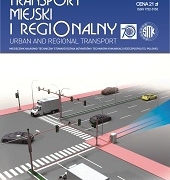 SITK RP
SITK RP 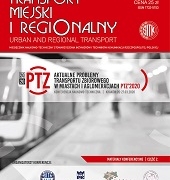
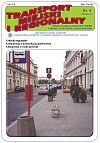 SITK RP
SITK RP 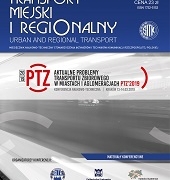
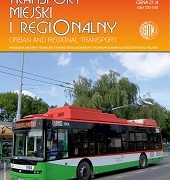
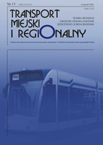 SITK RP
SITK RP 
 SITK RP
SITK RP SITK RP
SITK RP